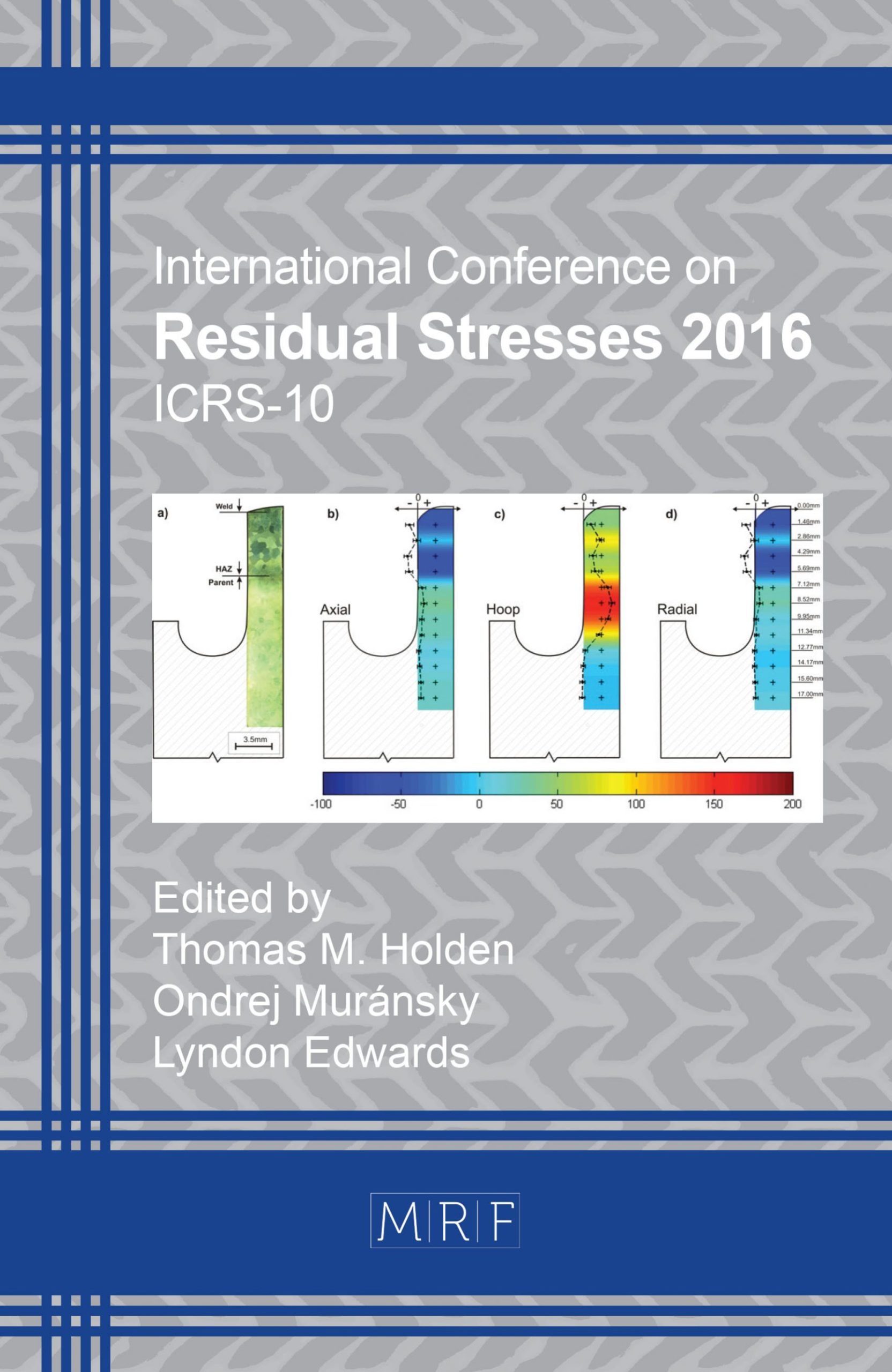Validation of XRD Stress Analyses Combining in-situ Tests and Integrated Peak Processing
B. Voillot, R. Billardon, J.L. Lebrun, F. Hild
download PDFAbstract. The surface integrity has a significant effect on the fatigue life of structural components (e.g., landing gears). To estimate sub-surface residual stresses, X-ray diffraction (XRD) is applied to a Ti5553 alloy sample in an in-situ tensile test. This material is challenging since it is made of α and β phases of different proportions, shapes and scales ranging from submicrometre to millimetre sizes. Therefore stress variations occur between grains. For millimetric probed volumes, the studied microstructure leads to shallow and noisy diffraction signals. It is shown that combing a new integrated method of diffraction peak registration and in-situ XRD measurements in tensile tests allows qualitative and quantitative results of residual stress analyses to be obtained for Ti5553 alloy samples.
Keywords
X-ray Diffraction, Ti5553 Alloy, in-situ Tensile Test, Peak Correlation, Integrated Methods
Published online 12/22/2016, 6 pages
Copyright © 2016 by the author(s)
Published under license by Materials Research Forum LLC., Millersville PA, USA
Citation: B. Voillot, R. Billardon, J.L. Lebrun, F. Hild, ‘Validation of XRD Stress Analyses Combining in-situ Tests and Integrated Peak Processing’, Materials Research Proceedings, Vol. 2, pp 91-96, 2017
DOI: http://dx.doi.org/10.21741/9781945291173-16
The article was published as article 16 of the book Residual Stresses 2016
![]() Content from this work may be used under the terms of the Creative Commons Attribution 3.0 licence. Any further distribution of this work must maintain attribution to the author(s) and the title of the work, journal citation and DOI.
Content from this work may be used under the terms of the Creative Commons Attribution 3.0 licence. Any further distribution of this work must maintain attribution to the author(s) and the title of the work, journal citation and DOI.
References
[1] R. R. Boyer, R. D. Briggs, The use of titanium alloys in the aerospace industry, J. Mater. Eng. Perform., 14 (2005) 681-685. http://dx.doi.org/10.1361/105994905X75448
[2] E. C. Reed, J. A. Viens, The influence of surface residual stress on fatigue limit of titanium, J. Eng. Ind., 82 (1960) 76-78. http://dx.doi.org/10.1115/1.3663004
[3] A. Cox, J.P. Villain-Chastre, S. Turner, M. Jackson, The effect of finish milling on the surface integrity and surface microstructure in Ti-5Al-5Mo-5V-3Cr, in: Proc. 13th World Conference on Titanium, 45, 2016. http://dx.doi.org/10.1002/9781119296126.ch45
[4] S. Roux, F. Hild, Stress intensity factor measurements from digital image correlation: post- processing and integrated approaches, Int. J. Fract., 140 (2006) 141-157. http://dx.doi.org/10.1007/s10704-006-6631-2
[5] M.E. Fitzpatrick, A.T. Fry, P. Holdway, F.A. Kandil, J. Shackleton, L. Suominen, Determination of residual stresses by X-ray diffraction, in: Measurement Good Practice Guide No. 52, 2005
[6] A. Bhattacharjee, V.K. Varma, S.V. Kamat, A.K. Gogia, S. Bhargava, Influence of beta grain size on tensile behavior and ductile fracture toughness of titanium alloy Ti–10V–2Fe–3Al, Metall. Mat. Trans. 37A (2006) 1423-1433. http://dx.doi.org/10.1007/s11661-006-0087-x
[7] S. Fréour, D. Gloaguen, M. François, R. Guillen, E. Girard, et al. Determination of the macroscopic elastic constants of a phase embedded in a multiphase polycrystal – application to the beta-phase of Ti17 titanium based alloy, Materials Science Forum, Trans Tech Publications Inc., 404-407 (2002) 723-728
[8] J. Lu, Handbook of measurement of residual stresses, Society for Experimental Mechanics, 1996
[9] F. Lefebvre, M. François, J. Cacot, C. Hemery, P. Le-Bec, E. Baumhauer, D. Bouscaud, T. Bergey, D. Blaize, D. Gloaguen, J. L. Lebrun, A. Cosson, R. Kubler, Y. Cheynet, E. Daniel, H. Michaud, J.C. Monvoisin, P. Blanchet, P. Allain, Y. Mrini, J. M. Sprauel, P. Goudeau, P. Barbarin, C. Charles, J.M. Le Roux, W. Seiler, C. Fischer, L. Desmas, A. Ouakka, M.J. Moya, Y. Bordiec, External reference samples for residual stress analysis by X-ray diffraction, Mat. Sci. Forum 681 (2011) 215-222. http://dx.doi.org/10.4028/www.scientific.net/MSF.681.215
[10] B. Voillot, F. Hild, J.L. Lebrun, R. Billardon, Evaluation of residual stresses due to mechanical treatment of Ti5553 alloy via XRD, in: Proc. 13th World Conference on Titanium, 268, 2016. http://dx.doi.org/10.1002/9781119296126.ch268
[11] EN 15305:2008, Non-destructive testing – test method for residual stress analysis by X-ray diffraction, 2008
































